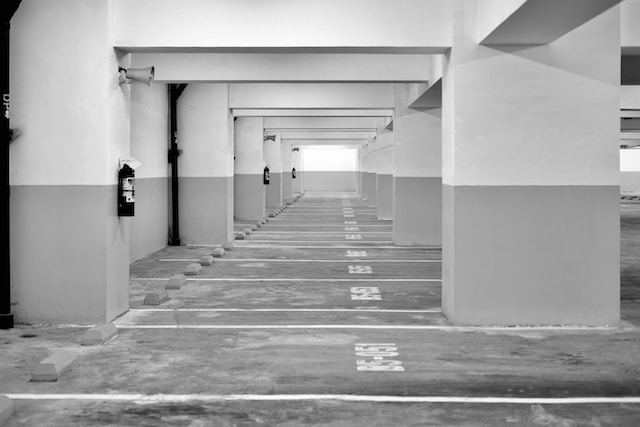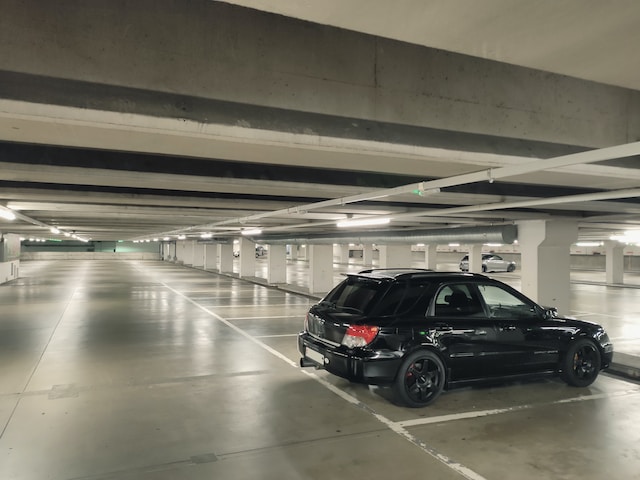The rise of autonomous vehicles has been one of the most significant technological advancements in the transportation industry in recent years. Autonomous vehicles, also known as self-driving cars, are capable of sensing their environment and navigating without human input. As this technology continues to develop, the potential benefits of autonomous vehicles are becoming increasingly apparent, including improved safety, reduced traffic congestion, and increased efficiency.
However, as these vehicles become more prevalent, it is also shaping the design and use of parking lots. In particular, there is a growing focus on standard parking space size and how it must adapt to accommodate the changing needs of these vehicles and their passengers.
The Current State of Parking Space Size

The current standard parking space size is typically 9 feet wide by 18 feet long, with a minimum height clearance of 7 feet. This dimension has been established over many years of research and observation, and it is designed to accommodate the average size of passenger vehicles. Several factors have influenced the size of parking spaces, including the following:
Vehicle Size
The average size of passenger vehicles has increased over time, which has led to an increase in parking lot dimensions to accommodate these larger vehicles. From minivans to full-size SUVs, carmakers are offering larger models that require more space in parking lots.
Safety Concerns
Additionally, safety concerns have played a role in determining parking space size, as more expansive spaces can reduce the risk of vehicle accidents and damage. Many parking lots also designate additional space for navigating and turning around, which must be factored into the size of the overall parking spaces.
Convenience
Finally, convenience is also a significant factor in parking space design, as larger spaces provide more room for passengers to enter and exit vehicles and can accommodate drivers who are less skilled at parking. As a result, the current standard parking space size has been established to balance these factors and provide a practical solution for parking in various settings.
Autonomous Vehicles and Parking Space Size
While the current standard size of a parking spot has served its purpose for many years, the rise of autonomous vehicles brings new considerations to parking space design. The existing parking space dimensions may no longer be sufficient to meet the needs of these vehicles and their passengers. This has led to a growing interest in exploring new approaches to parking space design that can accommodate autonomous vehicles and support the broader goals of the transportation revolution.
Smaller Parking Spaces

As autonomous vehicles become more prevalent, there is the potential for significant changes to the size of parking spaces. One possibility is that smaller parking spaces may become more feasible, as autonomous vehicles are better equipped to navigate tight spaces and park in close proximity to other vehicles. This could help to increase the overall efficiency of parking lots and free up space for other uses.
Larger Parking Spaces
On the other hand, there is also the possibility that larger parking spaces may be needed to accommodate the unique needs of autonomous vehicles. For example, autonomous electric vehicles may require additional space for charging stations or other infrastructure. Additionally, autonomous delivery vehicles or other commercial autonomous vehicles may need space for maintenance or loading and unloading cargo.
Implications for Parking Lot Design

Changes in parking space size due to the rise of autonomous vehicles have significant implications for parking lot design. With the potential for smaller parking spaces, parking lot design may become more efficient, allowing more cars to be parked in a given area. This could lead to a reduction in the space needed for parking lots and a corresponding increase in available space for other uses, such as green areas, commercial or residential buildings, or other amenities.
In addition, the need for larger parking spaces to accommodate charging stations or other infrastructure may necessitate new parking lot designs, such as multi-level structures or automated parking systems. These designs could allow for more efficient use of space and provide additional opportunities for new developments in urban areas. Multi-level structures, for example, could allow for more cars to be parked in a smaller footprint. At the same time, automated parking systems could enable parking spaces to be stacked vertically, thus increasing the density of cars parked in a given area.
Challenges and Opportunities
The changes in parking space size due to the rise of autonomous vehicles present both challenges and opportunities. On the one hand, smaller parking spaces may increase efficiency and reduce environmental impact, as more cars can be parked in a smaller area. This can lead to less land being dedicated to parking lots, which can be used for other purposes. In addition, automated parking systems can also reduce emissions by reducing the time spent driving around looking for a parking spot.
However, there are also significant challenges to retrofitting existing parking lots to accommodate new parking space size standards. It can be costly and challenging to reconfigure existing parking lots, and there may be resistance from stakeholders who are used to the current standards. Furthermore, smaller parking spaces may require new parking lot designs, such as multi-level structures or automated parking systems, which may be challenging to implement in existing parking lots.
Another challenge is the potential impact on employment, as the shift towards smaller parking spaces and autonomous vehicles could reduce the need for parking lot attendants and other related jobs. It is important to consider the potential impact on workers in this industry and find ways to support their transition to other employment opportunities.
Overall, the changes in parking space size due to the rise of autonomous vehicles are part of a broader transformation in the transportation industry towards increased efficiency, safety, and sustainability. By working together to address the challenges and opportunities presented by these changes, it’s easy to create a more efficient, equitable, and sustainable transportation system for the future.






